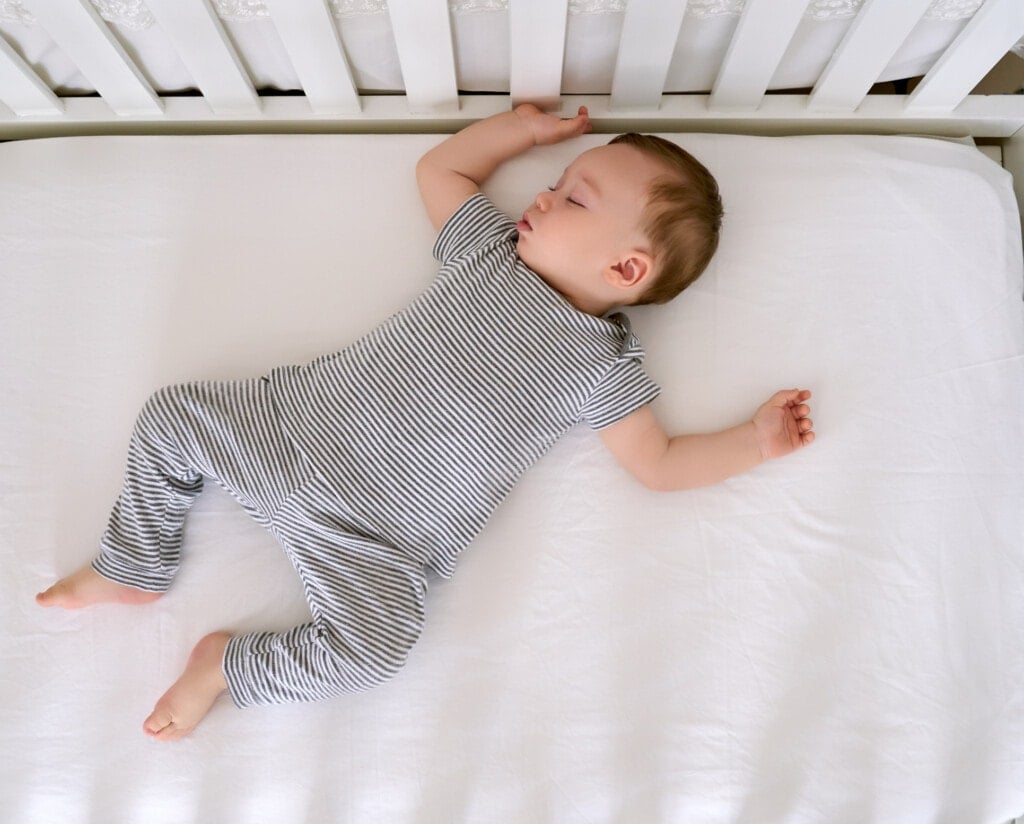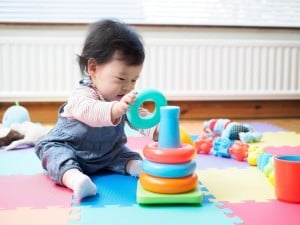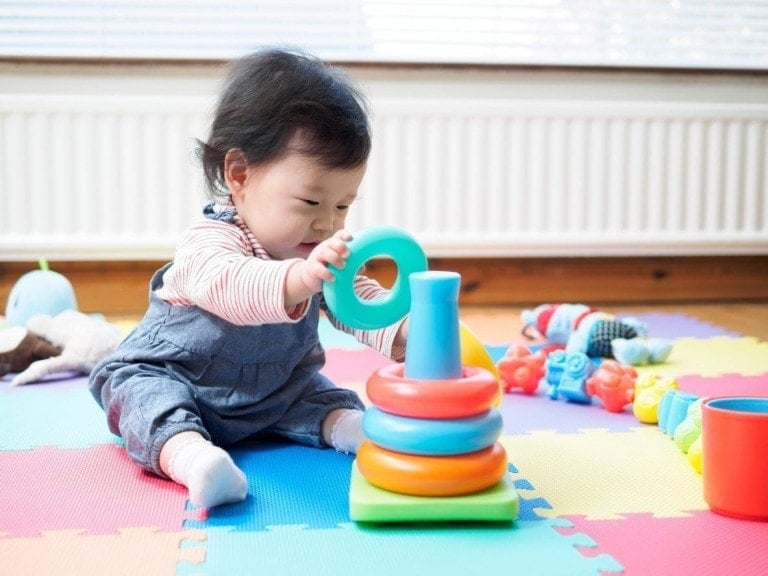Doesn’t it feel like every time you get into a groove with your baby’s sleep schedule, things change? It’s true! As your baby grows and develops, their daytime sleep requirements change. The good news is that the transition from three to two naps happens naturally and is usually welcomed by parents. When your baby is awake longer, it allows for more family time, and it is easier to get out of the house for appointments, classes, and visits with family and friends.
We’ve helped countless families guide their little ones through this transition from three to two naps and are happy to share all of our tips and tricks with you.
How Do I Know if My Baby Is Ready to Drop Their Third Nap?
- Is the last nap of the day getting shorter, or are you running out of time for one?
- Is it taking your baby a long time to fall asleep for naps?
- Are your baby’s naps getting shorter? (Averaging 30-45 minutes)
- Is your baby waking up early in the morning? (Before 6 a.m.)
If your baby is around 6-8 months old and these things have been happening consistently for two weeks, it’s likely time to make the transition. We recommend waiting two weeks before making any significant changes because, as you know, many factors can impact a baby’s sleep. They could be going through a developmental leap, teething, recovering from illness, or in a growth spurt.
How Do I Make the Transition From Three to Two Naps?
1. Start by Increasing Your Baby’s Awake Window by 10-15 Minutes Between Naps and Bedtime
This may not seem like a huge deal, but when you’re only awake for a couple of hours at a time, it makes a big difference. We don’t suggest making the change all at once. We want to avoid having a super overtired and cranky baby. Your end goal is to have your baby awake for 2.5 – 3.5 hours at a time.
A Sample Two-Nap Schedule Looks Like This:
- 6 a.m. Awake
- 6 a.m. – 9 a.m. Feed/Playtime/Nap time routine
- 9 a.m. – 10:30 a.m. Nap
- 10:30 a.m. – 1:30 p.m. Feed/Playtime/Lunch/Nap time routine
- 1:30 p.m. – 3 p.m. Nap
- 3 p.m. – 6:30 p.m. Feed/Playtime/Dinner/Bedtime routine
- 6:30 p.m. Bedtime
Here Is Another Two-Nap Schedule Option:
- 7 a.m. Awake
- 7 a.m. – 9:30 a.m. Feed/Playtime/Nap routine
- 9:30 a.m. – 11:00 a.m. Nap
- 11:00 a.m. – 2 p.m. Feed/Playtime/Lunch/Nap time routine
- 2 p.m. – 3:30 p.m. Nap
- 3:30 p.m. – 7 p.m. Feed/Playtime/Dinner/Bedtime routine
- 7 p.m. Bedtime
2. Switch It Up
You may notice your baby is starting to get tired near the end of their awake window, but you will need them to stay awake for another 10-15 minutes. Now is the time to switch it up. Take them into a new room of the house, show them a new toy, or take them outside. But remember, this is not the time to do something that may lull your baby to sleep, like a car ride or walk in the stroller.
3. Be Okay With an Earlier Bedtime
Most babies who have three naps a day will go to bed between 6:30 – 7:30 p.m. When your baby is adjusting to dropping that last nap, they will likely need an earlier bedtime. A bedtime as early as 6 p.m. is totally appropriate and will ensure you don’t have a super overtired baby and an early morning wake time.
4. Keep Your Sleep Routines the Same
It’s especially important that you keep your baby’s nap time and bedtime routines the same during times of change. Of course, babies don’t know what time of day it is, but they do recognize behavior patterns. These patterns cue your baby so they know sleep is coming. Keep your routines short and sweet: five to ten minutes for nap time routines and 30 to 40 minutes for bedtime routines. What you choose to do during this time and the order in which you do them is up to you. But keep it simple and be consistent.
We Usually Suggest the Following for a Nap Time Routine:
- Bring baby into their safe sleep space.
- Change into comfy clothes, if necessary, and change their diaper.
- Get into a sleep sack/sleep bag or swaddle.
- Read a story.
- Sing a song or nursery rhyme.
- Say goodnight and place your baby into the crib awake.
- Turn on the white noise machine.
- Turn off the light and leave the room.
5. Be Patient
It may take your baby up to two weeks to fully transition to two naps. In the meantime, you may experience some short naps and early mornings, but know that this won’t last forever.
6. Flexibility Is Key
As much as possible, let your little one take the lead. If your baby is eight months old but doesn’t show any signs of needing to drop a nap, don’t! If your baby naps two hours at a time, great! If they only sleep 1.5 hours, no problem! Things vary from day to day, so be sure you’re watching your baby and tweaking your schedule to suit their needs.
Are You Looking for More Support?
Remember, babies are all different and love to throw curveballs. If you’re struggling with night sleep or naps, seek the help of certified sleep consultants. We love to help and provide families with personalized support!



































